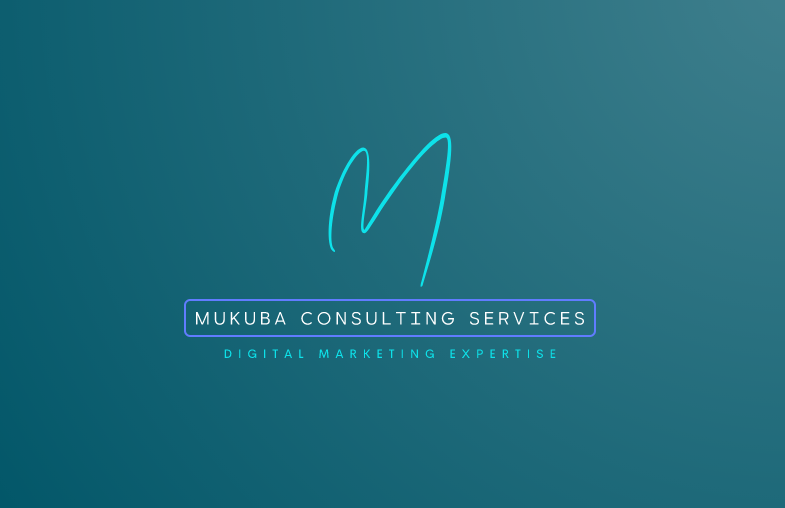Google Ad Strength: Enhancing the Performance of your Ads
Online advertising has become an essential component of marketing strategies in today’s digital era. Businesses across the globe leverage platforms like Google Ads to promote their products and services effectively.
However, merely creating an ad is not enough to guarantee success. To achieve optimal results, it is crucial to understand the concept of Google Ad Strength and how it can impact your advertising campaigns.
What is Google Ads Strength?

Google Ad Strength is a measure that evaluates the overall quality and effectiveness of your Google Ads. It provides insights and recommendations to enhance your ad performance and boost its visibility to potential customers.
The Significance of Ad Strength
When it comes to running successful online advertising campaigns, understanding the importance of Ad Strength is paramount.
Ad Strength serves as a key indicator of the quality and effectiveness of your ads, playing a crucial role in determining their performance and impact.
By focusing on enhancing your Ad Strength, you can unlock the full potential of your advertising campaigns and achieve remarkable results. Let’s explore the significance of Ad Strength and how it can positively influence your advertising endeavors.
Better Ad Performance
One of the primary reasons why Ad Strength holds immense importance is its direct correlation with ad performance. When you prioritize improving your Ad Strength, you lay the foundation for maximizing the effectiveness of your ads.
By following the recommendations and guidelines provided by Ad Strength, you can enhance the quality and relevance of your ads, resulting in higher click-through rates, increased conversions, and ultimately, a better return on investment (ROI).
By aligning your ads with the needs and expectations of your target audience, you create a compelling and valuable advertising experience. This leads to a higher likelihood of users engaging with your ads, taking the desired actions, and ultimately becoming loyal customers.
The improved ad performance not only drives immediate results but also sets the stage for long-term success in your advertising campaigns.
Increased Visibility:
In the competitive realm of online advertising, visibility plays a pivotal role in attracting potential customers. Ads with higher Ad Strength have a significant advantage in terms of visibility, as they are more likely to be displayed in prominent positions on Google’s search results pages.
Securing a prime spot ensures that your ads are readily seen by a larger audience, increasing the chances of capturing the attention of potential customers and driving valuable traffic to your website or landing page.
The increased visibility not only boosts brand exposure but also creates more opportunities for engagement and conversions. With your ads positioned prominently, you establish a strong presence in the digital landscape, making it easier for users to discover your offerings and choose your business over competitors.
Enhanced Ad Ranking
Ad Strength plays a significant role in determining the ranking of your ads on Google. When your ads are deemed relevant and of high quality, they are more likely to appear above competitors’ ads, securing prime real estate on the search results pages.
Higher ad rankings not only increase your visibility but also establish credibility and trust among potential customers. When users see your ads displayed prominently, they perceive your business as a reliable and authoritative source, making them more inclined to click on your ads and explore what you have to offer.
The enhanced ad ranking resulting from a strong Ad Strength helps you outshine your competitors, gain a competitive edge, and drive maximum engagement with your target audience.
Factors Affecting Google Ad Strength

Understanding the factors that contribute to Ad Strength is essential for optimizing your advertising campaigns. By paying attention to these key elements, you can effectively enhance the quality and performance of your ads, ultimately boosting your Ad Strength.
Here are some of the factors that influence Ad Strength and how you can leverage them to drive successful advertising campaigns.
Ad Relevance
Ad relevance is a crucial factor in determining Ad Strength. Creating ads that align with the intent of your target audience is essential for capturing their attention and driving engagement. Conducting thorough keyword research and understanding the search queries users are likely to make can help you craft highly relevant ads.
By incorporating these keywords strategically into your ad copy and ensuring that the content of your ads directly addresses user needs, you can enhance ad relevance and strengthen your Ad Strength.
Landing Page Experience
The landing page experience plays a significant role in Ad Strength. When users click on your ads, they expect to be directed to a landing page that aligns with the promises made in the ad. Optimizing your landing pages to provide a seamless and valuable experience is crucial for improving Ad Strength.
Ensure that your landing pages load quickly, offer relevant and compelling information, and make it easy for users to navigate and take the desired actions. By aligning your landing page experience with the expectations set by your ads, you can enhance Ad Strength and drive higher conversion rates.
Expected Click-Through Rate
The expected click-through rate (CTR) is another important factor that influences Ad Strength. Crafting compelling ad copy that entices users to click on your ads is essential for improving CTR and strengthening your Ad Strength.
Focus on creating attention-grabbing headlines, concise and persuasive descriptions, and compelling call-to-actions. By effectively communicating the unique selling points of your products or services and creating a sense of urgency or value, you can increase the likelihood of users clicking on your ads and improve your Ad Strength.
Ad Format and Extensions
The choice of ad format and the utilization of ad extensions can significantly impact Ad Strength. Experimenting with different ad formats and extensions allows you to enhance the user experience and provide additional value to potential customers.
Consider using sitelink extensions to provide direct links to specific pages on your website, call extensions to enable users to contact you easily, and structured snippets to highlight specific features or offerings.
By leveraging these formats and extensions, you can optimize your ads for maximum impact and improve your Ad Strength.
Improving Your Ad Strength

Improving your Ad Strength requires a proactive approach and the implementation of effective strategies. By focusing on key areas of optimization, you can enhance the quality and effectiveness of your ads, leading to higher Ad Strength and better advertising performance.
Below are actionable steps you can take to improve your Ad Strength and drive successful advertising campaigns.
Conduct Thorough Keyword Research
Thorough keyword research forms the foundation of a successful Google Ads campaign. Identify relevant keywords that align with your target audience’s search queries and incorporate them strategically into your ad copy and landing page content. By using the right keywords, you increase the chances of your ads being displayed to the right audience, thereby improving ad relevance and boosting Ad Strength.
Craft Compelling Ad Copy
Create persuasive and engaging ad copy that captures the attention of your audience. Craft attention-grabbing headlines that entice users to click on your ads. Use concise descriptions to highlight the unique selling points of your products or services.
Incorporate strong call-to-actions that prompt users to take the desired actions. By focusing on creating compelling ad copy, you can improve click-through rates and enhance the overall effectiveness of your ads.
Optimize Your Landing Pages
The landing page experience plays a crucial role in Ad Strength. Ensure that your landing pages provide a seamless and user-friendly experience. Optimize page load speed to minimize bounce rates and improve user satisfaction.
Make relevant information easily accessible and align the content of your landing pages with the expectations set by your ads. By optimizing your landing pages, you enhance the overall user experience, increase conversions, and boost Ad Strength.
Experiment with Ad Extensions and Formats

Utilize ad extensions and experiment with different ad formats to maximize the impact of your ads. Sitelink extensions provide additional relevant links, enabling users to explore specific pages on your website.
Call extensions make it convenient for users to contact you directly. Structured snippets showcase specific features or offerings. By leveraging ad extensions and formats, you enhance the visibility and appeal of your ads, thereby improving Ad Strength.
Continuously Monitor and Optimize
Regularly monitor the performance of your ads and review key metrics such as click-through rates, conversion rates, and cost-per-conversion. Identify underperforming ads and make data-driven optimizations to improve their effectiveness.
Conduct A/B tests to experiment with different ad variations and determine the most effective approach. Adjust your bidding strategies, refine your targeting options, and incorporate learnings from previous campaigns to continuously optimize your ad performance and boost Ad Strength.
By implementing these strategies and continuously optimizing your ads, you can significantly improve your Ad Strength and drive successful advertising campaigns. Remember to stay proactive, monitor performance regularly, and adapt your strategies based on the insights gained. With a strong Ad Strength, you can increase the visibility, engagement, and ultimately the success of your Google Ads campaigns.
Monitoring and Optimizing:

To ensure the effectiveness and success of your advertising campaigns, continuous monitoring and optimization are essential. By closely monitoring the performance of your ads and making data-driven adjustments, you can maximize their impact and improve your overall Ad Strength.
Let’s delve into the importance of monitoring and optimizing your ads and explore strategies for achieving optimal results.
Performance Tracking and Analysis
Regularly track and analyze the performance of your ads using Google Ads’ reporting tools. Monitor key metrics such as impressions, clicks, click-through rates (CTR), conversion rates, and cost-per-conversion.
This data provides valuable insights into the effectiveness of your ads and helps you identify areas that require improvement. By understanding how your ads are performing, you can make informed decisions and implement optimization strategies accordingly.
Ad Testing and Experimentation
A/B testing is a powerful technique to compare different versions of your ads and determine which variations yield better results. Test different headlines, ad copy, images, and calls-to-action to identify the most compelling combinations.
Experiment with various ad formats, extensions, and targeting options to uncover the optimal settings for your target audience. By testing and experimenting, you can optimize your ads and improve their performance over time.
Bid Management and Budget Optimization
Optimizing your bidding strategy and budget allocation is crucial for maximizing the effectiveness of your ads. Monitor the performance of your keywords and adjust your bids accordingly.
Allocate your budget to the best-performing campaigns and keywords while making informed decisions based on their return on investment (ROI). By effectively managing your bids and budget, you can optimize your ad spend and drive better results.
Ad Schedule and Audience Targeting
Consider the timing and targeting of your ads to reach the right audience at the right time. Analyze data on when your target audience is most active and adjust your ad schedule accordingly.
Refine your audience targeting based on demographics, interests, and behaviors to ensure your ads are reaching the most relevant users. By optimizing your ad schedule and audience targeting, you can increase engagement and improve overall ad performance.
Adapting to Market Trends and User Behavior
Stay updated with market trends and changes in user behavior. Keep an eye on industry developments, competitor strategies, and emerging technologies that may impact your ad campaigns. Regularly evaluate and adapt your ad content and strategies to align with evolving user preferences and expectations. By staying agile and responsive to market dynamics, you can maintain a competitive edge and optimize your ads for maximum impact.
Conclusion
Google Ad Strength is a valuable metric that can significantly impact the success of your Google Ads campaigns.
By focusing on factors such as ad relevance, landing page experience, expected click-through rate, and ad format/extensions, you can enhance the quality and performance of your ads, leading to increased visibility, higher engagement, and improved conversions. Embrace the recommendations provided by Ad Strength, optimize your ads, and stay vigilant in monitoring and optimizing their performance to achieve the best possible results.



